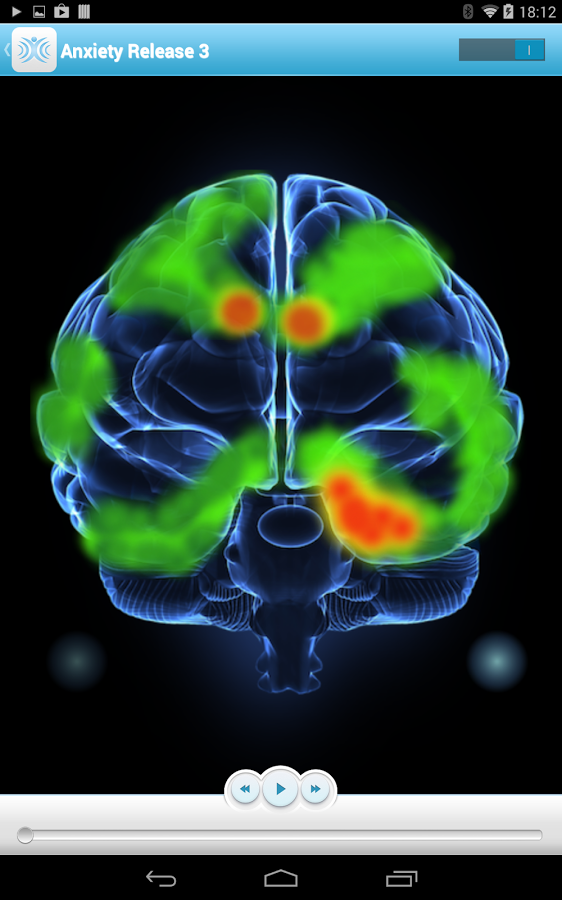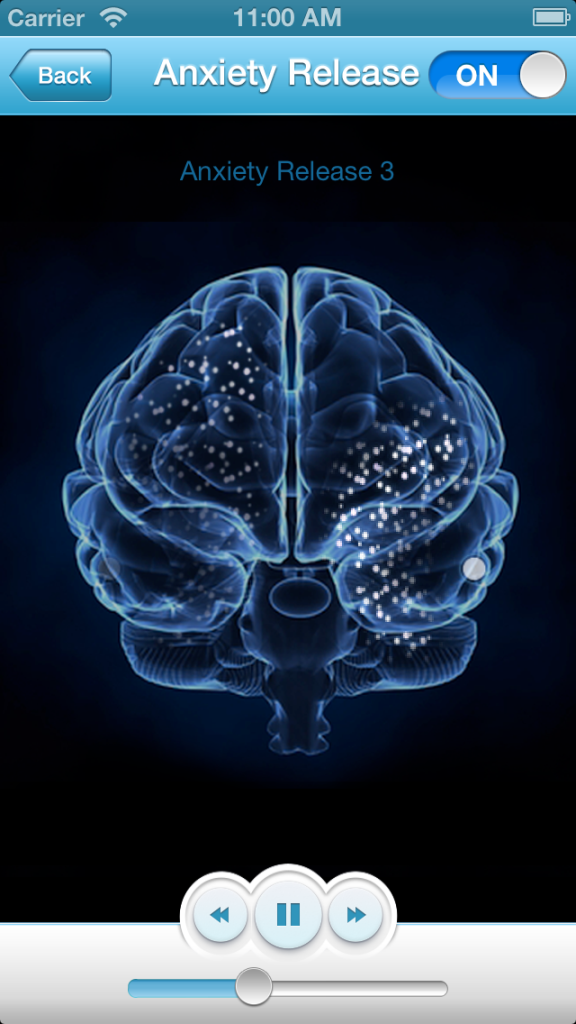Welcome to the Health Game. Joining me is Mark Grant, a psychologist with over 20 years’ experience in the treatment of stress, trauma and anxiety. Mark has just developed a fantastic new app to help people with their anxiety to deal with it on the go whenever it presents itself. Now Mark, the app is called Anxiety Release. How does it work?
Anxiety Release works by delivering non-verbal auditory and visual stimulation to the user. And we know from recent brain science discoveries that non-verbal stimulation is the most powerful way to change brain activity, it’s simply better than trying to change your thoughts or even do relaxation exercises.
When you say “non-verbal”, what do you mean by that? Can you break that down into layman’s terms exactly how it affects someone?
Non-verbal stimulation is anything that’s not words or language, so it could be sounds and it could be sights. On the app it’s sounds in the form of tones that a person hears left-right, left-right, and lights that a person sees going left-right and left-right. So those are non-verbal stimuli and they’re processed by the brain in a different way to verbal stimuli; they’re processed by the sensing part of the brain which is the part of the brain that’s responsible for feelings and emotions.
Am I right in saying that verbal stimulus has been the norm for treatment of anxiety sufferers? Why the turnaround?
The reason for the turnaround is the discovery that the brain doesn’t actually primarily process experience through cognitive or verbal dimensions; it processes it through sensory dimensions. So when you see a piece of wood lying on the ground in the forest your brain doesn’t say “Is that a snake?” and think about it, you jump out of the way because you feel anxious and then later you think “Was it a snake or was it just a piece of wood?” So the brain is programmed to react first and think later. This is the discovery that’s changing the way we think about how we treat anxiety.
What was the catalyst for you to come up with this fantastic app? What did you see in your practice that thought hey, we need something that people can use on the go whenever anxiety occurs?
After learning EMDR, which is the treatment method where bilateral stimulation originated, and seeing the dramatic and rapid changes in my clients, I realised that this was a potentially powerful tool that people could use in their everyday lives to tone down anxious thoughts and feelings and control their anxiety more effectively than traditional methods, which I really personally had become frustrated with because they were just so much hard work and often the gains I was seeing and the clients were seeing were really rather minimal.
So what is the key to Anxiety Release, the app that’s available on iTunes? What does it give an anxiety sufferer?
It gives an anxiety sufferer a direct line to the part of their brain that is maintaining the anxiety; that is their limbic system and their brain stem. And when that part of the brain is stimulated their anxiety is decreased almost automatically and very quickly, with very little effort of the part of the user. All they have to do is concentrate and the app does the work. There’s no effortful cognitive exercises or relaxation or breathing; it’s just really easy.
And how important is it for them to be able to carry it around on their smartphone wherever they are? Is that the key?
That’s absolutely the key because it means that they don’t have to wait for an appointment with their therapist or wait until it’s time to fill in their thought log or do their exercises. They can use it whilst waiting in the queue at the bank. They can use it while they’re sitting in the waiting room of a job interview or while they’re preparing for an exam. They can literally use it wherever and whenever anxiety strikes.
Great to chat Mark, thanks for your time. And to purchase the app just go to the iTunes store and search for “Anxiety Release” or you can check out Mark’s website which is full of great information, the address www.AnxietyRelease.com.au.
END OF RECORDING

